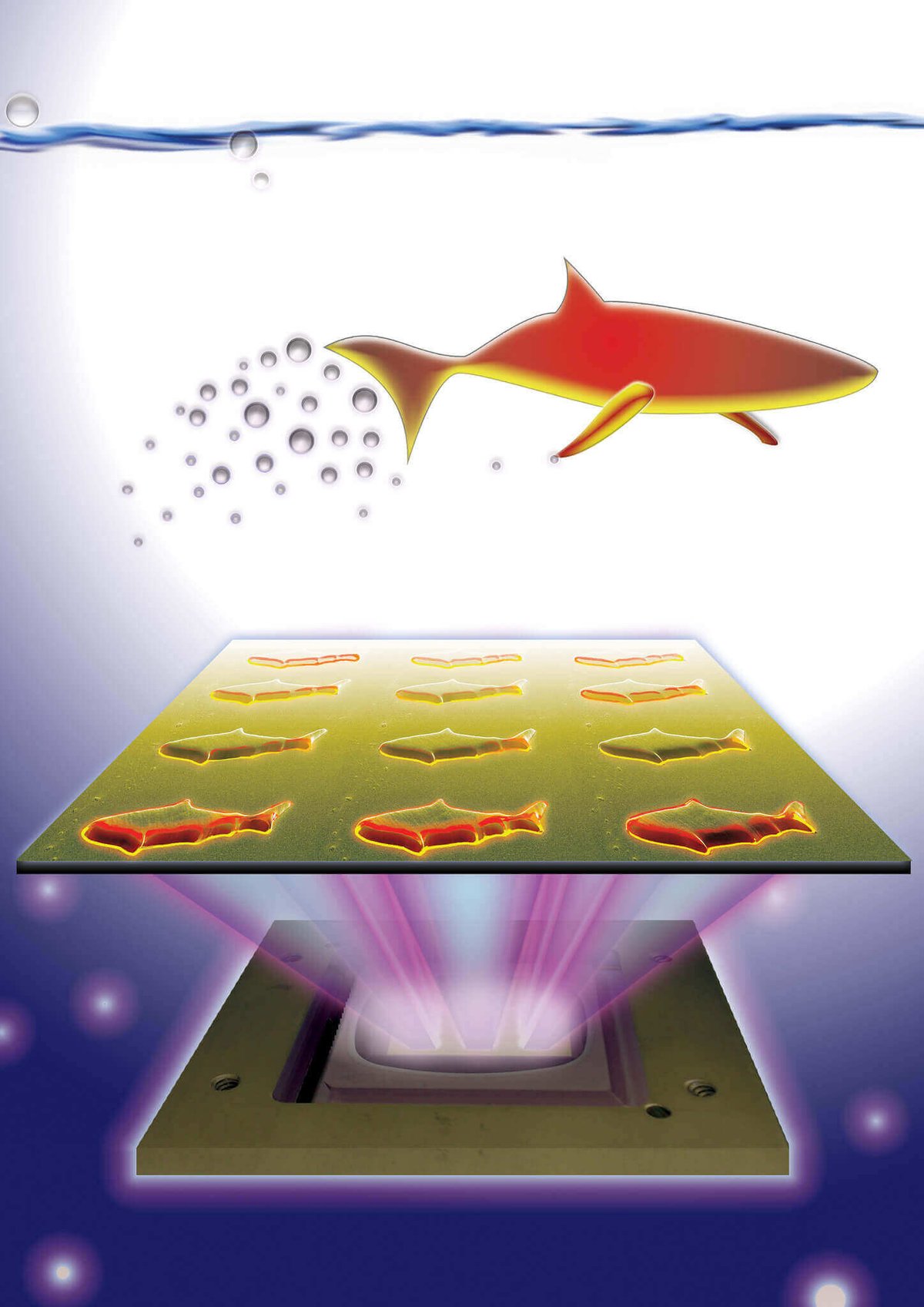Researchers have created tiny robots in the form of 3D printed microfish, programmed to detect and remove toxins from liquid.

In a study published this month in Advanced Materials, researchers from University California San Diego have revealed they’ve figured out a way to 3D print microrobots… in the shape of fish.
The fish measure just 120 microns long and are 30 microns thick — significantly smaller than a human hair — and hundreds of them can be 3D printed a matter of seconds. The fabrication method is based on a rapid, high-resolution 3D printing technology called microscale continuous optical printing (μCOP).
The fish are built with tiny particles of platinum in the tail, which react with hydrogen peroxide. When the microrobots are placed in peroxide, the tails move, thus propelling the fish along. Other particles can also be added to the materials used to make the fish, including chemicals that can detect and absorb toxins like bee venom.
For example, the study shows the 3d printed microfish busily cleaning up a liquid contaminated with a toxin. As the fish go about their work, they glow red, and the swimming motion ensures they won’t miss a single drop of the contaminant.
3D Printed Microfish… and Sharks?
At this stage the fish are just a proof of concept. They’re not ready to be used outside of a laboratory, but their creators have very high hopes for the future. One of the inventors Jinxing Li said in a press release:
“This method has made it easier for us to test different designs for these microrobots and to test different nanoparticles to insert new functional elements into these tiny structures. It’s my personal hope to further this research to eventually develop surgical microrobots that operate safer and with more precision.”
Other possible applications include delivering drugs to specific areas of the body, or removing toxins completely. And those future drug deliveries or detoxifying treatments are not limited to simple fish-shaped constructs. The team can also make 3D printed sharks or manta rays, and could eventually print microbots in the shapes of birds.
So, the next time your doctor asks you to pop a pill, run it under a magnifying glass. Don’t be surprised to find a pair of 3d printed microfish eagerly flapping their fins.
License: The text of "3D Printed Microfish can Seek and Destroy Liquid Toxins" by All3DP is licensed under a Creative Commons Attribution 4.0 International License.